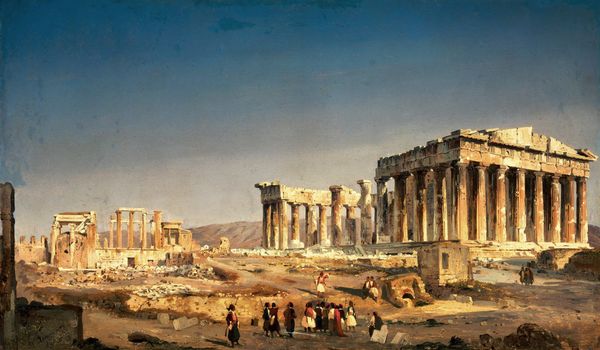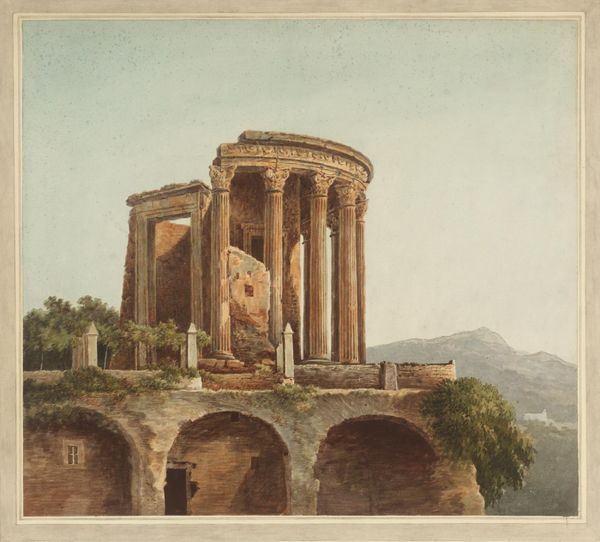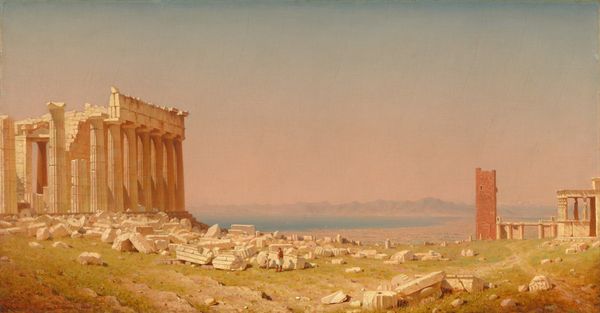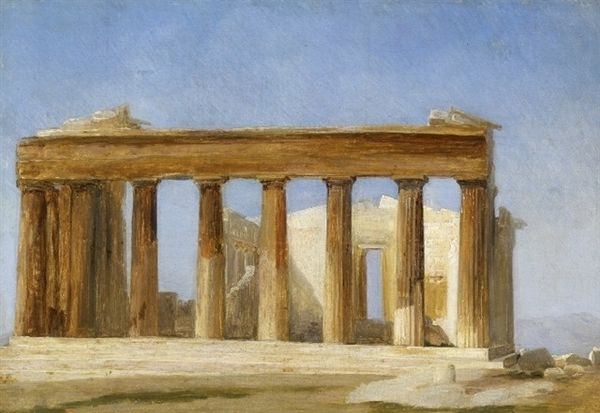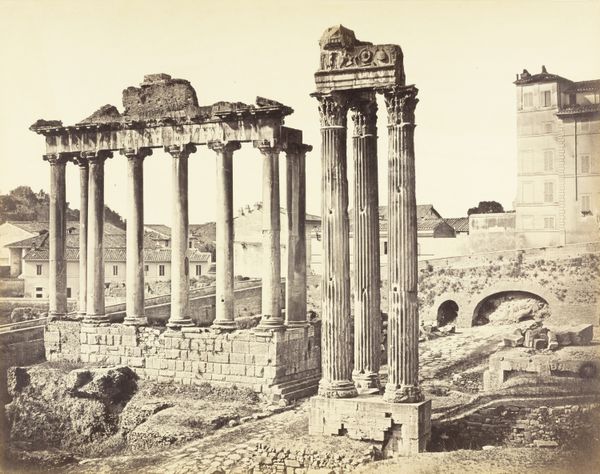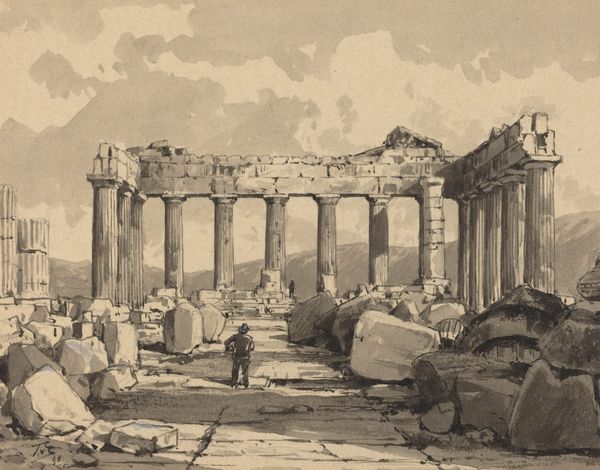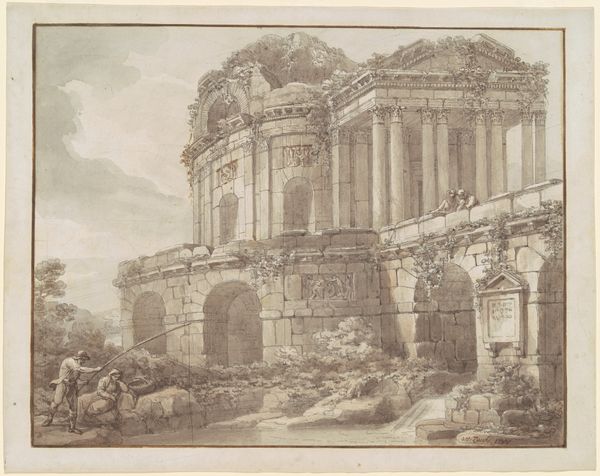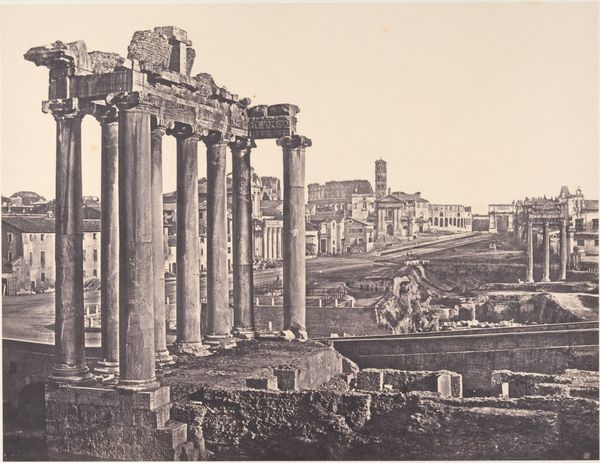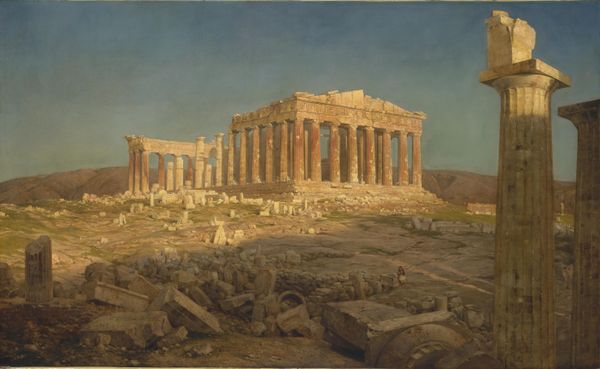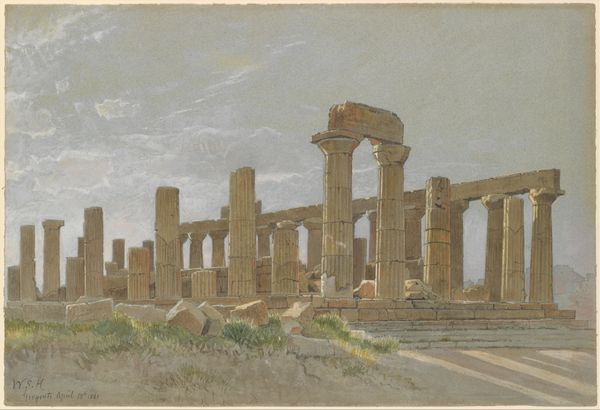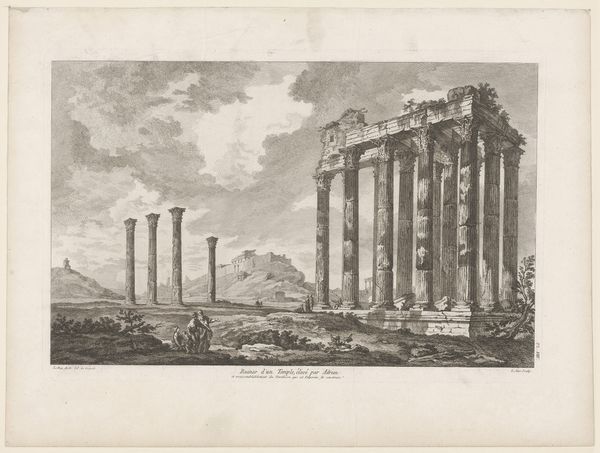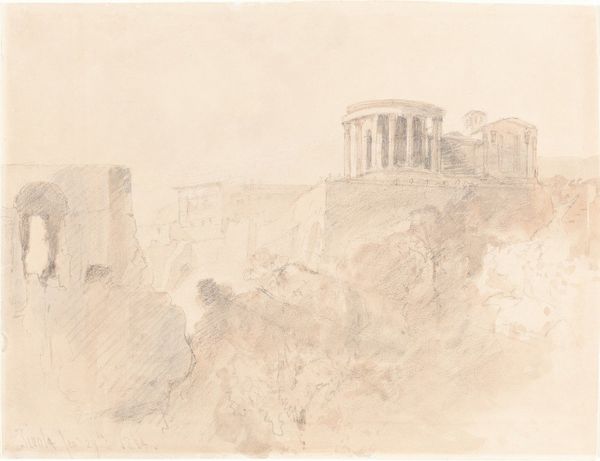
drawing, plein-air, watercolor
#
drawing
#
water colours
#
plein-air
#
greek-and-roman-art
#
landscape
#
classical-realism
#
watercolor
#
romanticism
#
cityscape
#
watercolour illustration
#
watercolor
Dimensions: 250 mm (height) x 373 mm (width) (bladmaal)
This watercolour of the Temple of Zeus was painted in Athens by Martinus Rørbye. The columns, remnants of a once-grand structure dedicated to the king of the gods, dominate the scene. The fluted columns topped with Corinthian capitals speak of an architectural language that has echoed through millennia. We see it re-emerge in the Renaissance, and again in Neoclassical structures, each time imbued with new political and cultural meanings. Consider the column itself, a phallic symbol, reaching skyward. It represents strength, stability, and the connection between the earthly and the divine. From ancient Egypt to the Roman Empire, obelisks and pillars have served as testaments to power and eternity. The enduring presence of the column in architecture reflects a deep-seated human desire for order, permanence, and transcendence. Here, Rørbye captures not just a ruin, but an idea—a cultural memory that continues to shape our world.
Comments
No comments
Be the first to comment and join the conversation on the ultimate creative platform.
